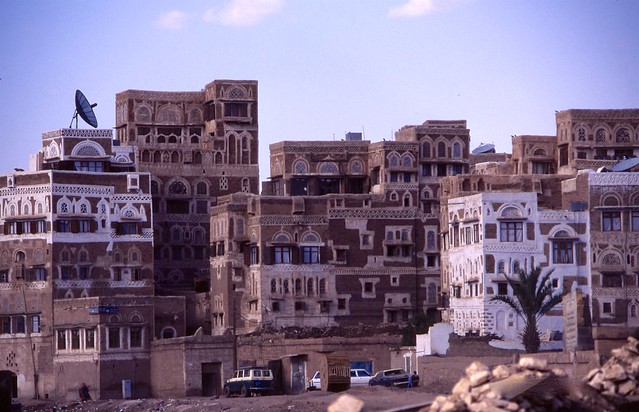When the war in Yemen comes to an end, dozens of human lives will be saved, no doubt; the recent
announcement of the Saudi-led Coalition (SLC) to halt all military operations in Yemen during Ramadan
has revived this hope. After all, it will be a different country that looks nothing like the Arabia Felix (the
happy, fortunate, and fertile according to Romans); it will be fragmented, lost, and disconnected from its
the rich history that it possesses (Yemen currently has 4 UNESCO recognized sites); as culture is at the bottom
of a long priority list, with currently over 3 million people displaced and half of the population is
malnourished.
Do I paint a very dark picture of Yemen after the war? Yes, I hope I am far too pessimistic, and the future is
much brighter if we could save whatever is left; culture is a fundamental element in the country’s
national identity as it encompasses habits, language, traditions, songs, etc. these are all sources of
pride for people and pillars of societies long before the modern state was introduced ironically the
Yemen’s culture is much older than the countries that are waging wars against it.
Prior to the conflict, there were 27 public museums in different cities, including Aden, Ta’iz, and Zinjibar;
they all suffered from negligence and limited budget. According to several officials, over 80 historical sites are either partially or fully damaged, mostly due to coalition airstrikes. If not damaged or sabotaged, there aren’t enough funds to sustain it; it is alarming to know that Aden’s Museum budget now is 300$, a vibrant coastal city that hosted many sultanates and civilizations, according to the Joint Analysis and Recovery Planning workshop organized by UNHabitat in November 2019.
According to the previous workshop, many residents have occupied some of the historical places which
provide free material for house building or shelter for the families as some of the essential services like
electricity and water are already available there, such as the Cisterns and Zoroastrian templates in Aden,
which are at least 200 years old. Or, even worse, they are used as army barracks for the fighting factions. To complicate the scene more, dozens of artefacts have been stolen or illegally smuggled to the US, as, the market is worth 8M $ making it the largest market for antiques in the world. The Republic of Yemen submitted an official request to the Government of the United States of America to impose import restrictions to protect its cultural patrimony under Article 9 of the 1970 Convention, like the ones for Syrian and Iraqi heritage, yet nothing has happened. This inaction does not only show the lack of interest in preserving one of the most ancient countries in the world; turning a blind eye to the dire situation there, but it portrays the support for plundering the
countries’ culture and heritage by organized gangs and extremists without facing any legal consequences
as stated clearly in the second protocol of the 1954 Hague Convention for the Protection of Cultural
Property in the Event of Armed Conflict.
In closing, this country has been drawing in a blood bath for a decade, and the only way out is to endorse
peace endeavours and bringing together the fighting factions the soonest; this should be done simultaneously with building strategies and plans to preserve, with national key stakeholders, what is left of Yemen; rehabilitation of the country; strengthening the governmental institutes; this all to
elevate the suffering of the Yemeni people and their source of pride.
Thousands of years of Yemeni Culture are gone with the wind of war

Photo Credits: Werner Bayer, flickr
